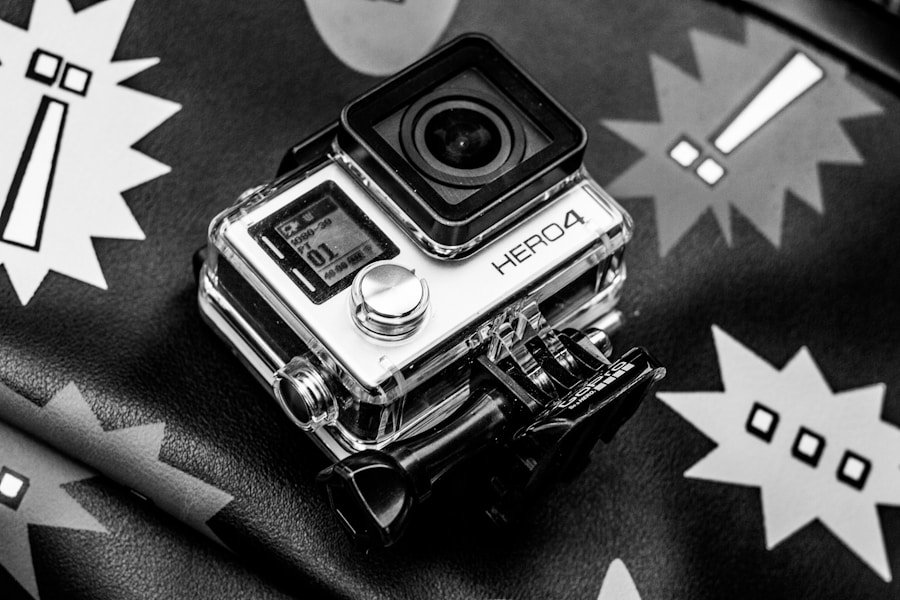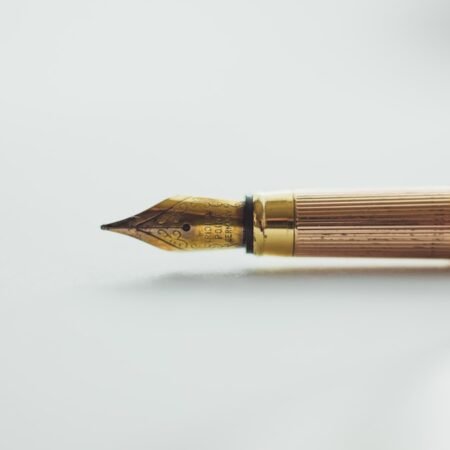When it comes to creating visually compelling and dynamic content, the use of multiple angles is crucial. By capturing a scene from different perspectives, you can provide your audience with a more immersive and engaging viewing experience. Whether you are shooting a film, a documentary, or a promotional video, incorporating multiple angles allows you to convey a more comprehensive and nuanced story. It also adds depth and dimension to your visuals, making them more visually interesting and captivating.
Furthermore, using multiple angles can help you highlight different aspects of a scene or subject. For example, if you are filming a cooking tutorial, capturing the chopping of vegetables from a close-up angle and the overall cooking process from a wide-angle shot can provide your viewers with a more comprehensive understanding of the recipe. Additionally, multiple angles can also help you create a sense of movement and progression within your footage, making it more dynamic and engaging for your audience. Overall, understanding the importance of multiple angles is essential for creating visually compelling and impactful content.
From a technical standpoint, using multiple angles also allows you to cover any potential mistakes or issues that may arise during filming. By having different perspectives to choose from, you can ensure that you have enough footage to work with during the editing process. This can be particularly useful in scenarios where reshooting is not an option, such as live events or documentary filmmaking. Additionally, having multiple angles to work with gives you more creative freedom during the editing process, allowing you to experiment with different visual styles and storytelling techniques. In summary, understanding the importance of multiple angles is crucial for creating visually compelling and versatile content.
Choosing the Right Camera Equipment
When it comes to capturing multiple angles, choosing the right camera equipment is essential. The type of camera and lenses you use will greatly impact the quality and versatility of your footage. For capturing dynamic and immersive shots, consider using a combination of different camera types, such as DSLRs, mirrorless cameras, and action cameras. Each type of camera has its own strengths and limitations, so using a variety of equipment can help you achieve a diverse range of shots.
In addition to choosing the right cameras, selecting the appropriate lenses is also crucial for capturing multiple angles effectively. Wide-angle lenses are great for capturing expansive landscapes or establishing shots, while telephoto lenses are ideal for capturing close-up details or distant subjects. Prime lenses can provide superior image quality and low-light performance, making them great for capturing cinematic shots. By having a variety of lenses at your disposal, you can ensure that you have the right tools for capturing different perspectives and angles.
Furthermore, investing in camera accessories such as tripods, gimbals, and sliders can greatly enhance your ability to capture multiple angles. Tripods provide stability and support for static shots, while gimbals and sliders allow for smooth and dynamic camera movements. These accessories can help you achieve professional-looking footage and add a layer of polish to your visuals. Overall, choosing the right camera equipment is essential for capturing diverse and visually compelling angles.
Planning Your Shots and Angles
Before you start filming, it’s important to plan out your shots and angles in advance. This involves considering the purpose of each shot, the visual story you want to convey, and how different angles can contribute to the overall narrative. By carefully planning your shots and angles, you can ensure that each perspective serves a specific purpose and contributes to the overall visual storytelling.
One way to plan your shots and angles is by creating a shot list or storyboard. This involves outlining the specific shots you want to capture for each scene or sequence. By visualizing your shots in advance, you can ensure that you have a clear vision for how different angles will contribute to the overall story. Additionally, creating a shot list can help you stay organized during filming and ensure that you capture all the necessary footage.
Another important aspect of planning your shots and angles is considering the logistics of capturing each perspective. This involves scouting locations, considering lighting conditions, and anticipating any potential challenges that may arise during filming. By taking these factors into account, you can ensure that you are prepared to capture each angle effectively and efficiently.
Overall, planning your shots and angles is essential for creating visually compelling and cohesive footage. By carefully considering the purpose of each shot and anticipating any potential challenges, you can ensure that your footage is visually engaging and contributes to the overall storytelling.
Utilizing Different Perspectives for Dynamic Storytelling
One of the key benefits of using multiple angles is the ability to convey a more dynamic and immersive story. By capturing a scene from different perspectives, you can provide your audience with a more comprehensive understanding of the subject matter. This can be particularly effective in scenarios where visual storytelling is crucial, such as in filmmaking or documentary production.
For example, using a combination of wide-angle shots and close-up details can help you establish the setting of a scene while also highlighting important visual elements. This can create a sense of depth and dimension within your footage, making it more visually interesting and engaging for your audience. Additionally, utilizing different perspectives can help you convey emotions and moods more effectively. For instance, capturing a character’s facial expressions from a close-up angle can help convey their emotions more intimately, while wide-angle shots can provide context and establish the overall atmosphere of a scene.
Furthermore, utilizing different perspectives can also help you create visual contrast within your footage. By juxtaposing different angles, you can create visual tension or highlight specific elements within a scene. This can add complexity and depth to your visuals, making them more visually compelling and thought-provoking for your audience. Overall, utilizing different perspectives is essential for creating dynamic and impactful storytelling through visual media.
In addition to conveying a more comprehensive story, utilizing different perspectives can also help you create a sense of movement and progression within your footage. By capturing a scene from various angles, you can create a sense of visual rhythm and flow that keeps your audience engaged. This can be particularly effective in scenarios where action or movement is crucial, such as in sports videography or music videos. By incorporating different perspectives into your footage, you can create a sense of energy and excitement that enhances the overall viewing experience.
Overall, utilizing different perspectives for dynamic storytelling is essential for creating visually compelling and engaging content. By conveying a more comprehensive story, creating visual contrast, and adding movement to your footage, you can ensure that your visuals are captivating and impactful for your audience.
Editing Techniques to Enhance Multiple Angles
Once you have captured footage from multiple angles, the next step is to edit it in a way that enhances its impact and storytelling potential. There are several editing techniques that can help you make the most of your multiple angles and create visually compelling content.
One effective editing technique for enhancing multiple angles is using cutaways and inserts to add context and detail to your footage. Cutaways are additional shots that provide context or detail related to the main action or subject matter. For example, if you are filming an interview, cutaways could include close-up shots of the interviewee’s hands gesturing or objects related to the topic being discussed. Inserts are similar to cutaways but involve inserting additional footage into the main sequence to provide context or detail. By incorporating cutaways and inserts into your editing process, you can add depth and nuance to your footage while also enhancing its storytelling potential.
Another editing technique for enhancing multiple angles is using cross-cutting to create visual contrast and tension within your footage. Cross-cutting involves alternating between different perspectives or scenes to create a sense of parallel action or build suspense. This technique is commonly used in action sequences or dramatic storytelling to create visual tension and keep the audience engaged. By incorporating cross-cutting into your editing process, you can create a more dynamic and visually compelling viewing experience.
Furthermore, using color grading and visual effects can also help enhance the impact of multiple angles in your footage. Color grading involves adjusting the color and tone of your footage to create a specific mood or atmosphere. By applying consistent color grading across different angles, you can create visual cohesion within your footage while also enhancing its overall aesthetic appeal. Visual effects such as transitions or overlays can also add an extra layer of polish to your footage, making it more visually interesting and engaging for your audience.
Overall, utilizing editing techniques such as cutaways and inserts, cross-cutting, color grading, and visual effects can help enhance the impact of multiple angles in your footage. By incorporating these techniques into your editing process, you can ensure that your visuals are visually compelling and contribute to the overall storytelling.
Incorporating Slow Motion and Time-lapse for Added Impact
In addition to capturing footage from multiple angles, incorporating slow motion and time-lapse techniques can further enhance the impact of your visuals. These techniques allow you to manipulate time within your footage, creating visually stunning effects that add an extra layer of impact to your storytelling.
Slow motion is a technique that involves capturing footage at a higher frame rate than normal and then playing it back at regular speed. This creates a sense of heightened drama and intensity within your footage while also allowing viewers to appreciate subtle details that may be missed at normal speed. Slow motion is particularly effective in scenarios where action or movement is crucial, such as in sports videography or action sequences. By incorporating slow motion into your footage from multiple angles, you can create visually stunning effects that captivate your audience.
Time-lapse is another technique that involves capturing footage at a much lower frame rate than normal and then playing it back at regular speed. This creates a sense of accelerated time within your footage, allowing viewers to witness gradual changes or movements over an extended period in just a few seconds. Time-lapse is commonly used in scenarios where capturing long-term changes or processes is crucial, such as in nature documentaries or architectural videography. By incorporating time-lapse into your footage from multiple angles, you can create visually captivating effects that add an extra layer of impact to your storytelling.
Furthermore, incorporating slow motion and time-lapse techniques into your footage from multiple angles allows you to create visually stunning effects that captivate your audience while also adding an extra layer of impact to your storytelling.
Tips for Seamless Transitions between Multiple Angles
When working with multiple angles in your footage, it’s important to ensure that transitions between different perspectives are seamless and cohesive. This involves using editing techniques that allow for smooth transitions while also maintaining visual continuity within your footage.
One effective tip for achieving seamless transitions between multiple angles is using match cuts to create visual cohesion within your footage. Match cuts involve transitioning between two shots by finding visual similarities between them, such as matching movements or compositions. This creates a sense of continuity within your footage while also allowing for smooth transitions between different perspectives.
Another tip for achieving seamless transitions between multiple angles is using motion continuity to maintain visual coherence within your footage. This involves ensuring that movements within different shots flow smoothly from one angle to another. For example, if one shot ends with a character moving towards the left side of the frame, the next shot should begin with the character entering from the left side of the frame. By maintaining motion continuity within your footage, you can ensure that transitions between different perspectives are seamless and visually cohesive.
Furthermore, using visual effects such as wipes or dissolves can also help achieve seamless transitions between multiple angles in your footage. Wipes involve transitioning between two shots by using a moving line or shape that covers one shot while revealing another. Dissolves involve blending two shots together by gradually fading out one shot while fading in another. By incorporating these visual effects into your editing process, you can create smooth transitions between different perspectives while also maintaining visual coherence within your footage.
Overall, achieving seamless transitions between multiple angles in your footage involves using editing techniques such as match cuts, motion continuity, wipes, and dissolves to maintain visual cohesion while also allowing for smooth transitions between different perspectives.
In conclusion, understanding the importance of multiple angles in visual storytelling is crucial for creating visually compelling content that engages audiences on a deeper level. Choosing the right camera equipment allows filmmakers to capture diverse perspectives effectively while planning shots in advance ensures that each angle serves a specific purpose in contributing to the overall narrative. Utilizing different perspectives enhances dynamic storytelling by conveying emotions effectively while editing techniques such as cutaways and inserts add depth and nuance to footage.
Incorporating slow motion and time-lapse techniques further enhances the impact of visuals by manipulating time within footage while seamless transitions between multiple angles maintain visual coherence within content effectively.
By following these tips for capturing diverse perspectives effectively through multiple angles filmmakers can create visually compelling content that engages audiences on a deeper level while conveying emotions effectively through dynamic storytelling techniques effectively.
By following these tips for capturing diverse perspectives effectively through multiple angles, filmmakers can create visually compelling content that engages audiences on a deeper level while conveying emotions effectively through dynamic storytelling techniques. By incorporating a variety of angles, such as wide shots, close-ups, and point-of-view shots, filmmakers can provide a more immersive experience for viewers, allowing them to see the world from different perspectives. This can help to create a more inclusive and relatable narrative that resonates with a wider audience. Additionally, utilizing diverse angles can add visual interest and depth to the storytelling, enhancing the overall impact of the film. Overall, capturing diverse perspectives through multiple angles is a powerful tool for filmmakers to create impactful and engaging content.








